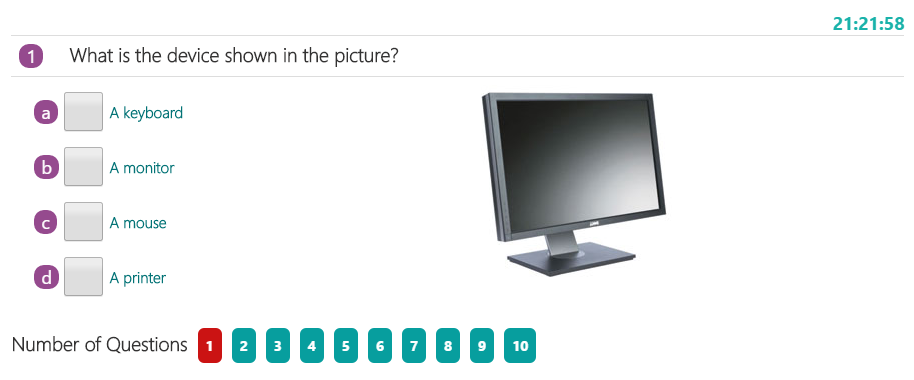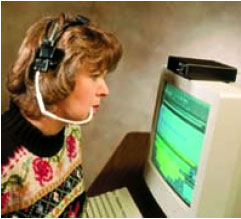- Tpmx Input Devices Driver Download For Windows 10 Windows 10
- Tpmx Input Devices Driver Download For Windows 10
- Tpmx Input Devices Driver Download For Windows 10 Free
Download and Update USB Drivers on Windows 10: Done successfully. This write-up walked you through the methods to download USB drivers on Windows 10, install, and reinstall them. You can try them one-by-one and then decide which of these methods works for you. Along with this, we also elucidated the best way to update the USB drivers on Windows 10. Wireless Notebook Optical Mouse 4000 driver download Windows 7, Windows 8/8.1, Windows 10, Windows XP, Windows Vista 8877 downloads Microsoft™ Wireless Optical Mouse 20: Wireless Optical Mouse 20 driver download Windows 7, Windows 8/8.1, Windows 10, Windows XP, Windows Vista 11616 downloads Microsoft™. This Realtek Audio Driver for Windows 10 64 bit will install for many laptop (notebook)/Desktop computers that use the Realtek sound chip. This driver is only for the 64bit version of Windows. Some versions of Windows have generic or older OEM drivers included with the system. Since the last major update I have been unable to use any sound input devices. This includes the mic input on the sound card (2 mics tested), a Jabra conference device (usb) and a usb webcam with microphone. I have re-installed the sound card driver. The sound device manager shows all the devices and says that they are all working properly.
-->Versions supported
- Windows 10
- Windows 8.1
Applies to
- Device manufacturers of CDC Control devices
Microsoft-provided in-box driver (Usbser.sys) for your Communications and CDC Control device.
In Windows 10, the driver has been rewritten by using the Kernel-Mode Driver Framework that improves the overall stability of the driver.
- Improved PnP and power management by the driver (such as, handling surprise removal).
- Added power management features such as USB Selective Suspend.
In addition, UWP applications can now use the APIs provided by the new Windows.Devices.SerialCommunication namespace that allow apps to talk to these devices.
Usbser.sys installation
Load the Microsoft-provided in-box driver (Usbser.sys) for your Communications and CDC Control device.
Note
If you trying to install a USB device class driver included in Windows, you do not need to download the driver. They are installed automatically. If they are not installed automatically, contact the device manufacturer. For the list of USB device class driver included in Windows, see USB device class drivers included in Windows.
Windows 10
In Windows 10, a new INF, Usbser.inf, has been added to %Systemroot%Inf that loads Usbser.sys as the function device object (FDO) in the device stack. If your device belongs to the Communications and CDC Control device class, Usbser.sys is loaded automatically.You do not need to write your own INF to reference the driver. The driver is loaded based on a compatible ID match similar to other USB device class drivers included in Windows.
USBClass_02
USBClass_02&SubClass_02
- If you want to load Usbser.sys automatically, set the class code to 02 and subclass code to 02 in the Device Descriptor. For more information, see USB communications device class. With this approach, you are not required to distribute INF files for your device because the system uses Usbser.inf.
- If your device specifies class code 02 but a subclass code value other than 02, Usbser.sys does not load automatically. Pnp Manager tries to find a driver. If a suitable driver is not found, the device might not have a driver loaded. In this case, you might have to load your own driver or write an INF that references another in-box driver.
- If your device specifies class and subclass codes to 02, and you want to load another driver instead of Usbser.sys, you have to write an INF that specifies the hardware ID of the device and the driver to install. For examples, look through the INF files included with sample drivers and find devices similar to your device. For information about INF sections, see Overview of INF Files.
Note
Microsoft encourages you to use in-box drivers whenever possible. On mobile editions of Windows, such as Windows 10 Mobile, only drivers that are part of the operating system are loaded. Unlike desktop editions, it is not possible to load a driver through an external driver package. With the new in-box INF, Usbser.sys is automatically loaded if a USB-to-serial device is detected on the mobile device.
Windows 8.1 and earlier versions
In Windows 8.1 and earlier versions of the operating system, Usbser.sys is not automatically loaded when a USB-to-serial device is attached to a computer. To load the driver, you need to write an INF that references the modem INF (mdmcpq.inf) by using the Include directive. The directive is required for instantiating the service, copying inbox binaries, and registering a device interface GUID that applications require to find the device and talk to it. That INF specifies 'Usbser' as a lower filter driver in a device stack.
The INF also needs to specify the device setup class as Modem to use mdmcpq.inf. Under the [Version] section of the INF, specify the Modem and the device class GUID. for details, see System-Supplied Device Setup Classes.
For more information, see this KB article.
Configure selective suspend for Usbser.sys
Starting in Windows 10, Usbser.sys supports USB Selective Suspend. It allows the attached USB-to-serial device to enter a low power state when not in use, while the system remains in the S0 state. When communication with the device resumes, the device can leave the Suspend state and resume Working state. The feature is disabled by default and can be enabled and configured by setting the IdleUsbSelectiveSuspendPolicy entry under this registry key:
To configure power management features of Usbser.sys, you can set IdleUsbSelectiveSuspendPolicy to:
'0x00000001': Enters selective suspend when idle, that is, when there are no active data transfers to or from the device.
'0x00000000': Enters selective suspend only when there are no open handles to the device.
That entry can be added in one of two ways:
Write an INF that references the install INF and add the registry entry in the HW.AddReg section.
Describe the registry entry in an extended properties OS feature descriptor. Add a custom property section that sets the bPropertyName field to a Unicode string, 'IdleUsbSelectiveSuspendPolicy' and wPropertyNameLength to 62 bytes. Set the bPropertyData field to '0x00000001' or '0x00000000'. The property values are stored as little-endian 32-bit integers.
For more information, see Microsoft OS Descriptors.
Develop Windows applications for a USB CDC device
If you install Usbser.sys for the USB CDC device, here are the application programming model options:
Starting in Windows 10, a Windows app can send requests to Usbser.sys by using the Windows.Devices.SerialCommunication namespace. It defines Windows Runtime classes that can use to communicate with a USB CDC device through a serial port or some abstraction of a serial port. The classes provide functionality to discover such serial device, read and write data, and control serial-specific properties for flow control, such as setting baud rate, signal states.
In Windows 8.1 and earlier versions, you can write a Windows desktop application that opens a virtual COM port and communicates with the device. For more information, see:
Win32 programming model:
.NET framework programming model:
Related topics

1. Features
WO Mic can turn your phone to be a microphone for your computer. You need not to pay a cent to buy any gadget. And it's mobile if you choose wireless transport. Millions of people have installed it and are using it daily for talking, recording, voice remote control and many other activities.
Three components cooperate to achieve that:
- WO Mic App which runs on phone. It captures your voice through phone microphone and transmit them to computer.
- WO Mic Client which runs on computer. It connects to app, receives voice data and passes them to virtual mic device.
- WO Mic Virtual Device which also runs on computer, though in kernel space. It receives voice data from client program, simulates a real microphone device, and provides audio data to applications like Sound Recorder.
Below diagram shows how captured voice data is flowing through these components:
Main features:
- Wireless microphone without any cost
- Can be used with any programs on PC just like REAL microphone
- Very short lag
- Easy to configure and use
- Supports auto reconnection when your PC reboots
- Support multiple connection methods: USB, Bluetooth, Wi-Fi, and Wi-Fi direct
- Audio format: 48000 sampling rate, 16 bits per sample, mono channel
2. Download and install
You need to install all 3 WO Mic components mentioned above. Note below sections assume Windows operating system on PC. If you are running Linux, refer to Linux setup.
2.1 Install app on phone
If you cannot access Google Play market, download WO Mic apk directly.
2.2 Install client on PC
Download and run the setup program to install the client.
| File | Size | Version |
|---|---|---|
| WO Mic client for Windows | 1,151,945 bytes | 4.7 |

2.3 Install device driver on PC
WO Mic device drivers are available for Win7/8/10. Supported processors are x86 and x64.
| File | Size | Version |
|---|---|---|
| WO Mic device driver for Windows | 242,645 bytes | 1.6.0.0 |
Once the driver is installed successfully, WO Mic device will be created automatically. Follow these steps to check if the device exists and is working properly:
- Press Windows + X and click Device Manager in the pop menu.
- In Device Manager, go to Sound, video and game controllers.
- WO Mic device should be listed and work well as shown in below diagram.
3. User guide
3.1 Choose transport
Depending on system, different transports may be selected as the communication channel between your phone and computer:- iPhone: Wi-Fi
- Android: USB, Bluetooth, Wi-Fi and Wi-Fi Direct
3.1.1 USB transport
We recommend USB transport whenever possible, as it is more robust than wireless connections. It also has lower latency and higher bit rate. To use USB connection, follow these:- Connect your phone and PC via an USB cable.
- Enable USB debugging on Android phone.
- On PC, install right USB driver for your phone. You may consult your vendor for that.
- Press Windows + X and click Device Manager in the pop menu.
- In Device Manager, go to Universal Serial Bus devices.
- In the list, you are expected to find something like ADB Interface.

3.2 Configure and start server on phone
Launch WO Mic on phone. Before staring the server, you can go to Settings to configure what you prefer.
3.2.1 Transport option
Select the transport you would. Requirements for each transport:- USB transport. ADB Interface should be seen as described in 3.1.1; otherwise it will report no device can be detected.
- Bluetooth. Pair your phone with computer if you haven't done that. Turn on Bluetooth on both phone and computer.
- Wi-Fi. Turn on Wi-Fi on both phone and computer and connect them to same hotspot.
- Wi-Fi Direct. Turn on SoftAP on phone and connect PC to this AP.
3.2.2 Control port option
This port number should be same as in client; otherwise, connection will fail. If no special reasons, don't change it.Note media port can only be configured in client. It shall be synced to server when making connection.
3.2.3 Audio source option
There are 5 mic modes. Due to different Android phone hardware and OEM customization, not all modes may be supported on your phone. Even some are supported, they may not have same effect as described here. So please take below mode description as a hint and explore each mode on your phone to select appropriate one.
- Default. Phone embedded microphone.
- Mic mode 1. Try this if you want to use external wired headset.
- Mic mode 2. Try this if there are echoes with other modes.
- Mic mode 3. Try this if you will speak at a long distance or noisy environment.
- Rear mic. Try this if you want to better capture sound from back.
3.2.4 Start server
Once all have been configured, go to main UI and press Start button to start server. If it prompts not enough permission, grant microphone or audio record permission to this app.
Once the state changes to Started or Connectable, the server is ready to accept connection request from client.
3.3 Connect from client
On Windows, follow these steps to connect:- Launch WO Mic client. If you meet 'MSVCP140.dll is missing' or similar error on Win7/8/8.1, please either upgrade your Windows, or install KBA2999226 and KBA3118401 from Microsoft.
- Select Connection ->Connect...
- In connect dialog, select same transport type as you did on phone in 3.2.
- In Details pane, specify auxiliary connection parameters:
- Bluetooth. Select the phone Bluetooth name in the dropdown list.
- USB. None.
- Wi-Fi. Enter the IP address shown on server.
- Wi-Fi Direct. Enter the IP address of SoftAP. Use the default if you don't know what it is.
- Click Connect.
Once client shows to be connected, audio data captured by phone will be streamed to computer.
3.4 Verify streaming is going well
Before using WO Mic device, you may want first to verify audio is being streamed correctly from phone to PC. To do that, play received audio data directly:- Click Options menu in WO Mic client.
- Enable Play in speaker.
- Unmute PC speaker.
3.5 Use WO Mic device
Set WO Mic device as input for your game, recording, chat or any other applications.
Tpmx Input Devices Driver Download For Windows 10 Windows 10
Some applications may not allow you to select audio device. For that case, you can set WO Mic device to be default audio recording device in Windows settings.
3.6 Issues caused by anti-virus software
Some anti-virus or firewall software make wrong alarms about WO Mic client or driver. They might even delete related files or block network connection causing WO Mic to malfunction. If you meet those issues, please configure your computer to allow WO Mic to work.
Especially, if WO Mic used to work well and stops working suddenly, it's mostly caused by anti-virus software blocking. Some quick verifications:
- Change control port from default 8125 to some other value (i.e. 40000) and connect again. Note: same value should be configured on phone app.
- Re-install client program to some other folder (pretending to be different program) and connect again.
Warning: Never download and install WO Mic client and driver setup programs from untrusted sites. Download from this page(https://wolicheng.com/womic/) and check if downloaded file size matches the informed value.
Tpmx Input Devices Driver Download For Windows 10
Contact
Before reporting any issues to us, you are encouraged to check this FAQ page for any known issues and their solutions.
Tpmx Input Devices Driver Download For Windows 10 Free
You can contact us at support@wolicheng.com.
